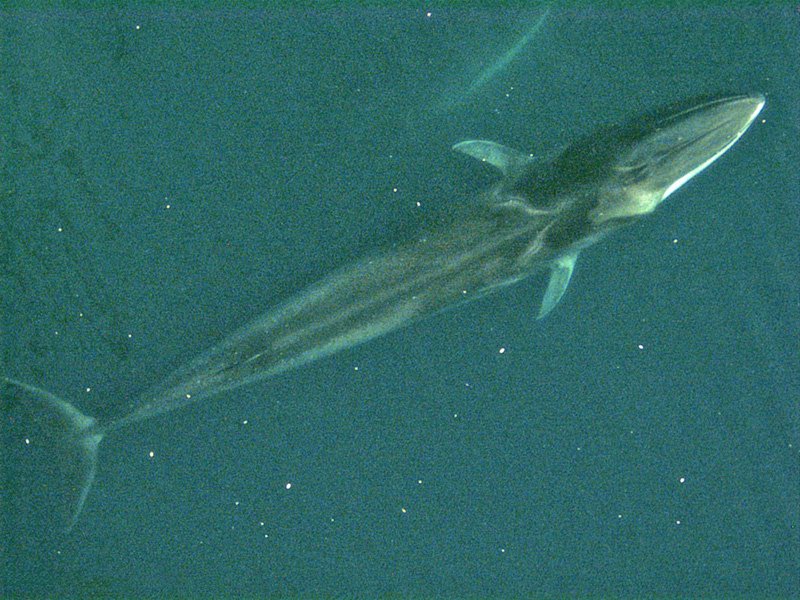
©Protected Resouces Division, Southwest Fisheries Science Center, La Jolla, California: Fin Whale (Balaenoptera physalus)
Colours
Distinguishing features
Long and slender, its body is brownish-grey with a paler underside.
It is brownish to dark or light gray dorsally and white ventrally. The left side of the head is dark gray, while the right side exhibits a complex pattern of contrasting light and dark markings. On the right lower jaw is a white or light gray "right mandible patch", which sometimes extends out as a light "blaze" laterally and dorsally unto the upper jaw and back to just behind the blowholes. Two narrow dark stripes originate from the eye and ear, the former widening into a large dark area on the shoulder — these are separated by a light area called the "interstripe wash". These markings are more prominent on individuals in the North Atlantic than in the North Pacific, where they can appear indistinct. The left side exhibits similar but much fainter markings. Dark, oval-shaped areas of pigment called "flipper shadows" extend below and posterior to the pectoral fins.
When the whale surfaces, the dorsal fin is visible soon after the spout. The spout is vertical and narrow and can reach heights of 6 metres or more.
When feeding, they blow 5-7 times in quick succession, but while traveling or resting will blow once every minute or two. On their terminal (last) dive they arch their back high out of the water, but rarely raise their flukes out of the water. (Wikipedia)
Size
- Up to 2730 cm (Length of specimen)
Weight
- Up to 74000 kg
Depth range
- Up to 470 m
Synonyms
Distribution
Distribution and habitat preferences
It is found in all the major oceans, from polar to tropical waters. It is absent only from waters close to the ice pack at the poles and relatively small areas of water away from the open ocean. The highest population density occurs in temperate and cool waters. (Wikipedia)


